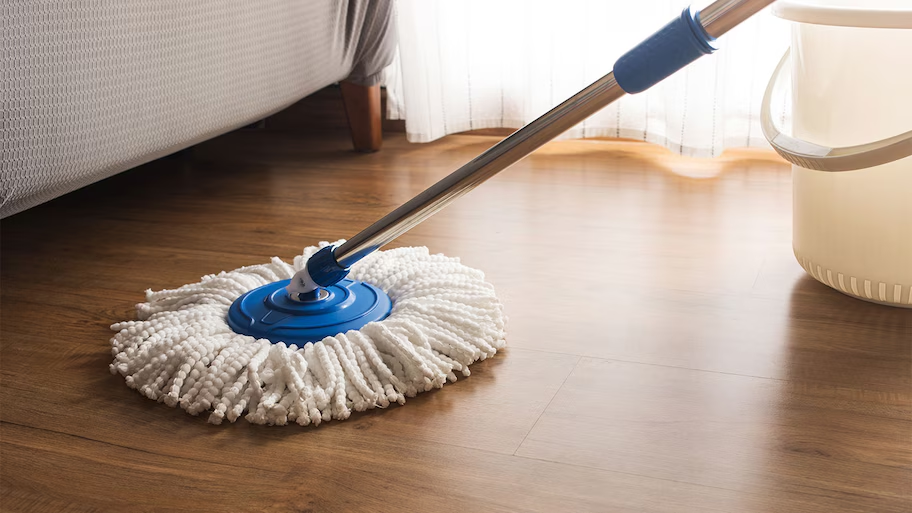Vinyl plank flooring has become a popular choice for homeowners due to its durability, affordability, and easy maintenance. Whether you’ve recently installed vinyl plank flooring or are considering it for your home, understanding how to properly clean and maintain it is essential for preserving its beauty and longevity. In this comprehensive guide, we’ll explore the best practices for cleaning and maintaining vinyl plank flooring, ensuring that your floors remain pristine for years to come.
Understanding Vinyl Plank Flooring
Vinyl plank flooring is a synthetic flooring material composed of multiple layers, including a wear layer, printed design layer, core layer, and backing layer. This layered construction gives vinyl plank flooring its durability and versatility, making it resistant to scratches, stains, and water damage. Available in a wide range of styles and colors, vinyl plank flooring can mimic the look of natural wood, stone, or tile, providing homeowners with endless design possibilities for their interiors.
Cleaning Vinyl Plank Flooring
Regular cleaning is essential for maintaining the appearance and condition of vinyl plank flooring. Follow these steps to effectively clean your floors:
- Sweep or Vacuum: Begin by removing loose dirt, dust, and debris from the surface of the floor using a broom or vacuum cleaner with a soft brush attachment. This prevents abrasive particles from scratching the surface during the cleaning process.
- Mop with a Mild Solution: Fill a bucket with warm water and add a small amount of mild dish soap or a specially formulated vinyl floor cleaner. Avoid using harsh chemicals or abrasive cleaners, as they can damage the finish of the flooring. Dip a mop or microfiber cloth into the cleaning solution and wring out excess water before mopping the floor in gentle, overlapping strokes.
- Spot Clean Stains: For stubborn stains or spills, spot clean the affected area with a soft cloth dampened with warm, soapy water. Avoid using abrasive scrub brushes or scouring pads, as they can scratch the surface of the vinyl flooring. For tougher stains, you can use a manufacturer-approved vinyl floor cleaner or a mixture of water and white vinegar.
- Rinse Thoroughly: Once you’ve finished mopping or spot cleaning, rinse the floor thoroughly with clean water to remove any remaining soap residue. Use a separate mop or cloth dampened with water for this step, ensuring that all cleaning solution is removed from the surface of the flooring.
- Dry Completely: Allow the floor to air dry completely before walking on it or replacing furniture and rugs. Avoid using excessive amounts of water, as prolonged exposure to moisture can damage the seams and edges of the vinyl planks.
Maintaining Vinyl Plank Flooring
In addition to regular cleaning, proper maintenance practices can help extend the life of your vinyl plank flooring. Here are some tips for maintaining vinyl plank flooring:
- Use Furniture Protectors: Place felt pads or furniture coasters under the legs of heavy furniture to prevent scratches and indentations on the vinyl flooring. Avoid dragging or sliding furniture across the floor, as this can cause damage to the surface.
- Use Mats and Rugs: Place mats or rugs at entryways and high-traffic areas to trap dirt, moisture, and debris before they can be tracked onto the vinyl flooring. Be sure to use non-slip rug pads underneath area rugs to prevent them from shifting or sliding.
- Wipe Up Spills Promptly: Accidental spills should be cleaned up promptly to prevent staining or damage to the vinyl flooring. Use a soft cloth or paper towel to blot up spills immediately, then clean the area with a mild soap and water solution as needed.
- Avoid Standing Water: Vinyl plank flooring is water-resistant but not waterproof, so it’s important to avoid allowing standing water to remain on the surface for extended periods. Wipe up spills promptly and use a damp mop for cleaning rather than soaking the floor with water.
- Trim Pet Nails: If you have pets, keep their nails trimmed to prevent scratches on the vinyl flooring. Consider using pet mats or rugs in areas where pets spend a lot of time to protect the floor from wear and tear.
- Schedule Regular Maintenance: Periodically inspect the vinyl plank flooring for signs of wear, damage, or lifting edges. Address any issues promptly to prevent further damage and ensure the longevity of your floors.
Conclusion
Vinyl plank flooring is a durable and low-maintenance flooring option that can add beauty and functionality to any home. By following the proper cleaning and maintenance practices outlined in this guide, you can keep your vinyl plank flooring looking its best for years to come. With regular care and attention, you can enjoy the beauty and durability of vinyl plank flooring in your home for many years to come.


